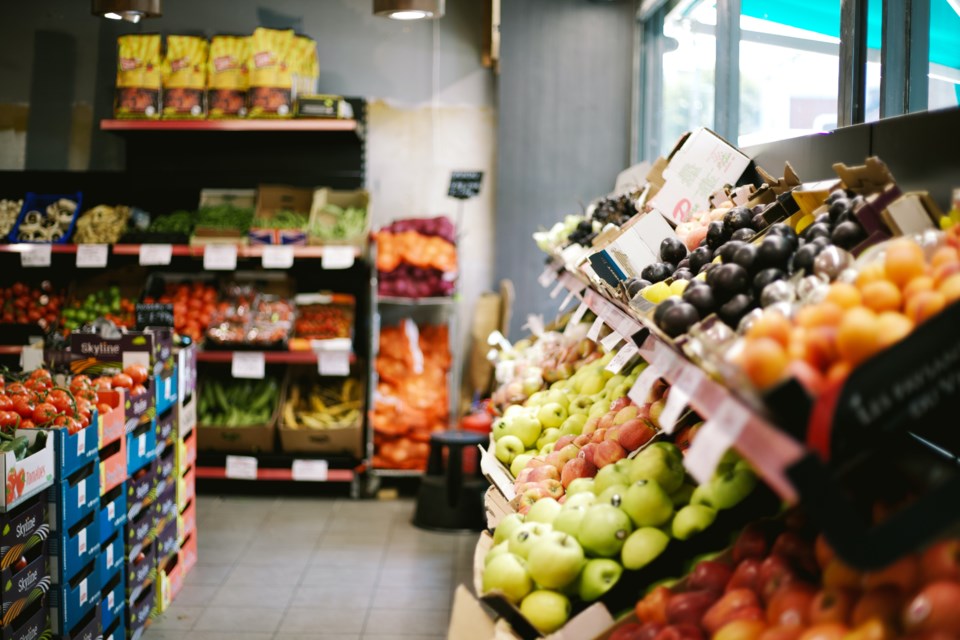THUNDER BAY – More local families will struggle to meet their food needs in 2022, as rising inflation and food prices exacerbate existing inequalities, the Thunder Bay & Area Food Strategy has warned.
With food costs projected to rise by 5 to 7 per cent this year, the group said in a statement Monday, the average Canadian family of four will pay nearly $1,000 more for food in 2022 than last year.
That’s enough to push some living on the poverty line over the edge, and force hard choices for many others, said food strategy co-chair Charles Levkoe, a Canada Research Chair in Equitable and Sustainable Food Systems and Associate Professor at Lakehead University.
“I think what we’re seeing across the board is too many people are struggling to make ends meet,” he said. “For a lot of people, a slight increase in prices is going to have a really dramatic effect.”
The group’s statement cited figures from Canada’s Food Price Report 2022, published by a collection of Canadian universities in December.
It predicts food prices will increase by an average of 5 to 7 per cent, after rising by 3.9 per cent in 2021.
That includes predicted increases of 6 to 8 per cent for dairy and restaurants, 5 to 7 per cent for vegetables and baked goods, 3 to 5 per cent for fruit, and a smaller 0 to 2 per cent for meat and seafood, after large increases in that category last year.
Overall, it means the average family of four will spend $14,767 on food in 2022, up by $966, the report projects.
Pandemic disruptions are partly to blame, the report suggests, while also pointing to generally high inflation and climate change, with adverse weather impacting vegetable and wheat production, for example.
The cost of food has been on the rise consistently over the past decade, but the spike this year and last was more dramatic, Levkoe said. The impact is more pronounced in the north, and particularly in remote communities, he noted.
In its statement, the food strategy called on governments at all levels to take immediate action, in the form of policies that “address the underlying causes of poverty and inequity.”
While governments have extended supports for emergency food aid, like food banks, during the pandemic, Levkoe said it's been clearly demonstrated that approach is ineffective.
“People want to know, what can I do, who can I donate to?” he said. “Since the ‘80s, these emergency charity responses, there’s lots of energy into [things] like food drives, but the problem has just gotten worse consistently, because we’re not actually addressing the underlying issues, which are around equity and poverty.”
The food strategy’s statement urges governments to implement policies like a basic income to get at the root causes of hunger.
“There is evidence that points to policy changes that could move the needle,” it reads. “Examples include increasing minimum wage to a livable wage (including guaranteeing sick pay for all workers), increasing social services and instituting a guaranteed annual income, ensuring the availability of affordable housing, addressing the climate crisis, and follow[ing] through on the commitment to support self-determination of northern and Indigenous communities.”
Volker Kromm, executive director of the Regional Food Distribution Association (RFDA), which supplies many regional food banks and runs its own food access programs, said he agrees agencies like his are a stop-gap measure, not a solution.
It’s why the RFDA has been a staunch supporter of a basic income, he said, but added the organization’s ability to engage in advocacy is limited.
Without a stronger social safety net, however, he said organizations like his continue to provide vital aid.
Rising food prices have created more demand for that assistance, he reported.
“It’s not huge increases, but it’s a growing dependency on this system,” he said. “We are seeing a steady rise [in demand], both in feeding programs and for home deliveries.”
Rising costs are also stretching the RFDA’s ability to purchase food from retailers and wholesalers, Kromm said. He reported seeing food prices up in the neighbourhood of four per cent from last year, but said an order the organization was planning to place for March would be at least 10 per cent more expensive.
“The rising food prices is a real threat,” he said. “We’ve always had a little bit of cushion. We’re going to be hitting the wall very soon.”
